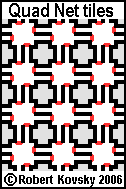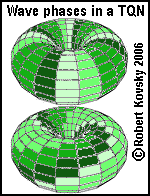|
References
|
|
Anisimov, M. A., 1991, Critical Phenomena in Liquids and Liquid Crystals, Gordon and Beach Science Publishers
|
|
Anisimov, M. A., Rabinovich., V.A. & Sychevev, V. V., 1995, Thermodynamics of the Critical State of Individual Substances, CRC Press
|
|
Arbib, M. A., Érdi, P. & Szentágothai, J., 1998, Neural Organization: Structure, Function, and Dynamics, MIT.
|
|
Bak, P, Tang, C. & Wiesenfeld, K., 1987, Self-organized Criticality, An Explanation of 1/f Noise, Phys.Rev.Letters 59. 381.
|
|
Calvin, W. C., 1990, The Cerebral Symphony: Seashore Reflections on the Structure of Consciousness, Bantam Books.
|
|
Domb, C., 1996, The Critical Point, A historical introduction to the modern theory of critical phenomena, Taylor & Francis.
|
|
Edelman, G. M., 1987, Neural Darwinism: The Theory of Neuronal Group Selection, Basic Books.
|
|
Edelman, G. M. & Tononi, G., 2000, A Universe of Consciousness: How Matter Becomes Imagination, Basic Books.
|
|
Fisher, M. E., 1964, Correlation Functions and the Critical Region in Simple Fluids, J. Math. Phys. 5, 944.
|
|
Freeman, W. J., 2000, Neurodynamics: An Exploration in Mesoscopic Brain Dynamics, Springer.
|
|
Georgii, H.-O., Haggstrom, O., Maes, C., 1999, The random geometry of equilibrium phases, http://www.arxiv.org/abs/math.PR/9905031.
|
|
Gokcen, N. A., 1981, Statistical Thermodynamics of Alloys, Plenum Press.
|
|
Green, H. S. & Hurst, C. A., 1964, Order-Disorder Phenomena, Interscience Publishers.
|
|
Hertz, J., Krogh, A. & Palmer R. G., 1991, Introduction to the Theory of Neural Computation. Addison-Wesley.
|
|
Hillerts, M., 1999, "Applications of Gibbs Energy-Composition Diagrams" in Aronson, H. I., ed., Lectures on the Theory of Phase Transformations, The Minerals, Metals & Materials Society (American Institute of Mining, Metallurgical and Petroleum Engineers, 2d ed.).
|
|
Istrail, S., ~2000, "Statistical Mechanics, Three-Dimensionality and NP-completeness, I. Universality of Intractability for the Partition Function of the Ising Model Across Non-Planar Lattices," http://www.cs.brown.edu/~sorin/pdfs/Ising-paper.pdf
|
|
James, W., 1890, Psychology, Living Library edition, World Publ. 1948.
|
|
Kadanoff, L. P., 2000, Statistical Physics: Statics, Dynamics and Renormalization, World Scientific.
|
|
Kandel, E. R., Schwartz, J. H., Jessell, T. M., 1991, Principles of Neural Science, Appleton & Lange, 3d ed.
|
|
Kearton, W. J., 1948, Steam Turbine Theory and Practice, a textbook for engineering students, I. Pitman, London, 5th ed.
|
|
Kelso, J. A. S., 1995, Dynamic Patterns: The Self-Organization of Brain and Behavior, MIT.
|
|
Kittel, C., 1968, Introduction to Solid-State Physics, 3d. ed., John Wiley & Sons.
|
|
Piaget, J., 1936, The Origins of Intelligence in Children, International Universities Press, 1974 ed.
|
|
Piaget, J., 1946, Play, Dreams and Imitation in Childhood, W. W. Norton, 1962.
|
|
Porter, D.A. and Easterling, K.E., 1981, Phase Transformations in Metals and Alloys, Van Nostrand Reinhold (UK).
|
|
Posner, M.I. & Raichle, M.E., 1995, Precis of Images of Mind, Behavioral and Brain Sciences 18 (2): 327-383.
|
|
Satterlie, R.A., "Neuronal control of swimming in jellyfish; a comparative story," Can. J. Zool. 80: 1654-1669 (2002), www.ucihs.uci.edu/biochem/steele/satterlie.pdf
|
|
Skarda, C.A. & Freeman, W.J., 1987, "How brains make chaos in order to make sense of the world," Behavioral and Brain Sciences, 10:161-195.
|
|
Stanley, H. E., 1999, "Scaling, universality, and renormalization: Three pillars of modern critical phenomena," Rev.Mod.Phys., 71, 2 (Centenary special), S358-S366.
|
|
The Mountaineers, Mountaineering: the Freedom of the Hills, 1967, The Mountaineers, Seattle, (2nd ed.).
|
|
Thera, N., 1973, The Heart of Buddhist Meditation, Samuel Weiser, New York.
|
|
Truesdell, C., 1983, Rational Thermodynamics, Springer (2d ed.).
|
|
Truesdell, C. & Bharatha, S., 1977, The Concepts and Logic of Classical Thermodynamics as a Theory of Heat Engines Rigorously Constructed upon the Foundation Laid by S. Carnot and F. Reech, Springer-Verlag.
|
|
Truesdell, C. & Noll, W., 2004, The Non-Linear Field Theories of Mechanics (3d. ed. Antman) Springer.
|
|
Walter, W. G., 1953, The Living Brain, W. W. Norton.
|
|


